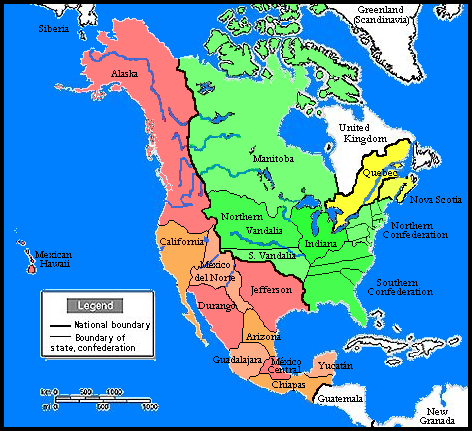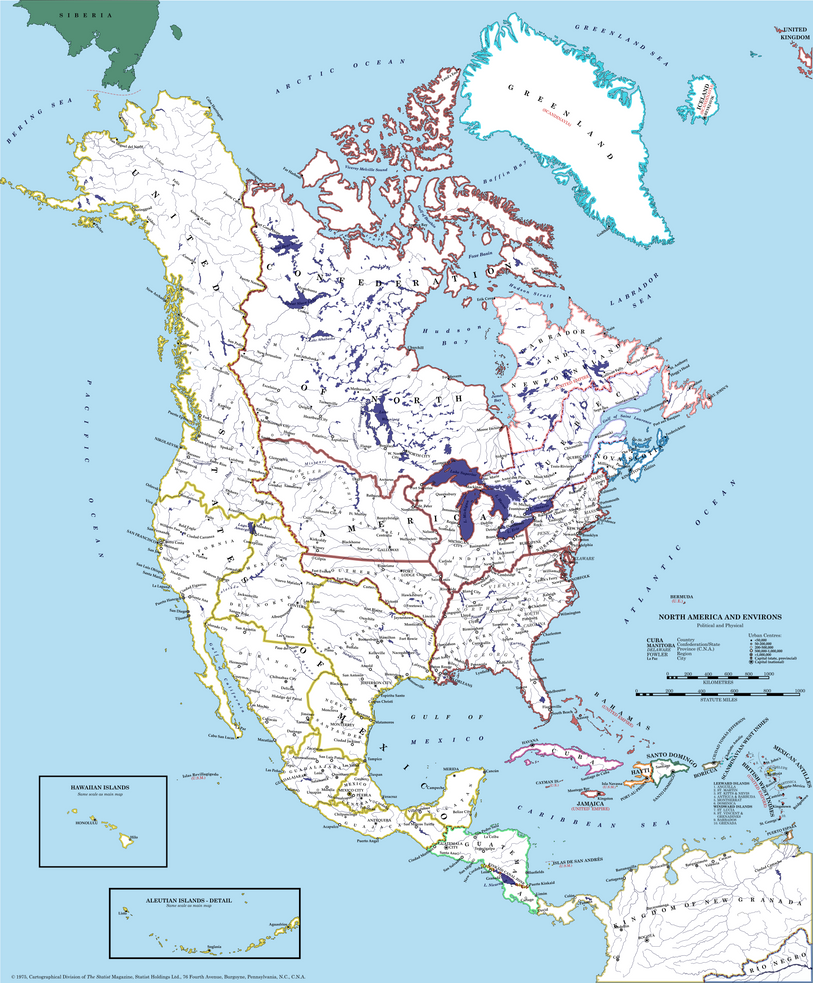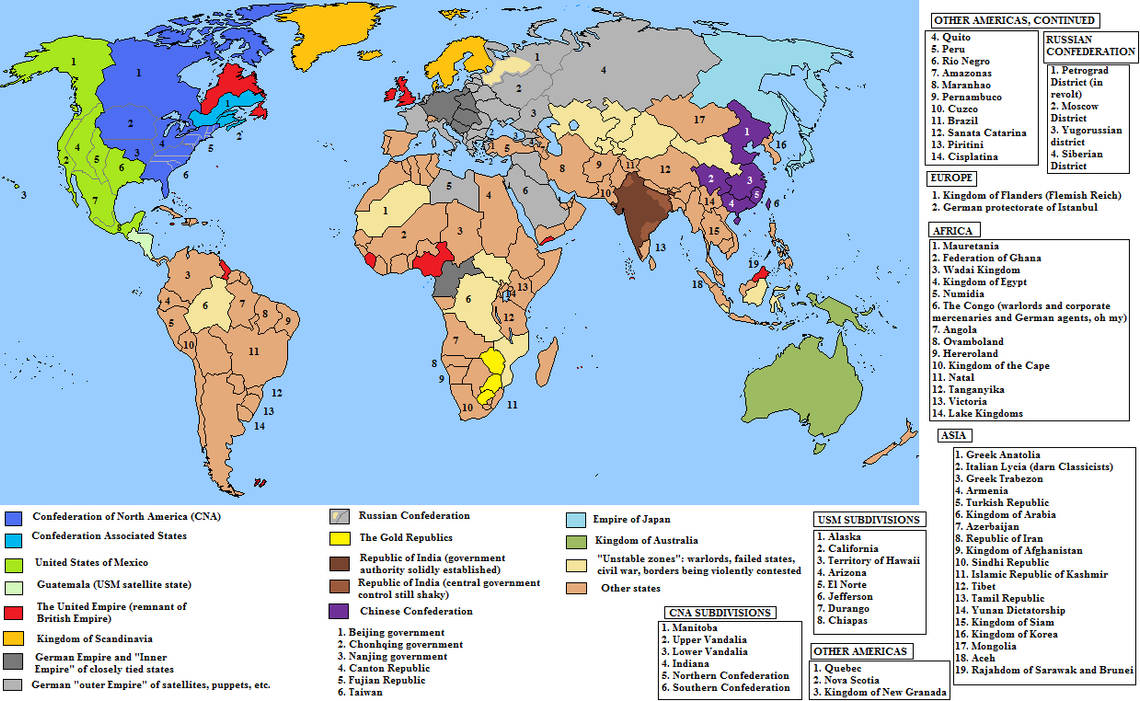View attachment 650791
The history of India in the War Without War is the the story of a nation torn between worlds, between domination under the British or the Germans, and between the raging tensions in world socialism between the Moralintern and the Pacific Pact. To get to the root of this sorry state, it is important to look at the history of
National Union. Despite the company's long and storied history and its incredible positive public image in the Anglosphere, there is simply no denying the fact that for most of its existence National Union was as close to the Confederation's answer to Kramer Associates that the nation was capable of producing.
Mechanized farm equipment has always had pride of place in the CNA since the first primitive steam tractor was developed in 1845, based on improvements made on the Newcomen steam engine. The rapid improvement in productivity would have an immediate and severe impact in the Southern Confederation, where the early tractors were unsuited for cotton plantations at the same time southern yeomen were able to rent or share the new devices to maximize the value of their labor. When a crash in the price of slaves saw an attempt by the wider Confederation government to end the practice these yeomen were quick to denounce the planter class who contemplated secession, comparing them unfavorably to the earlier North American rebels and accusing them of trying to trick the poor into spending their blood to maintain the plantation lifestyle. Many of the most ardent slaveholders knew a lost cause when they saw one, choosing to liquidate as many of their assets as possible and make a new life in the much friendlier Mexico. The technology would become the basis of an agricultural revolution in the CNA, and the sudden ability for small groups to productively farm large areas would have a large impact on the growth of the agrarian socialism that would in turn lead to the birth of Moralism in the twentieth century.
It was in this social tumult that Samuel Matthews would be born in the Southern Confederation. Born in the same year the tractor had been invented, Matthews was an inquisitive child, and as a young man would get a job helping to manufacture the devices. Quickly showing his aptitude, he would become shop foreman by the age of twenty, and by the age of twenty-two Matthews would establish his own shop, inspired by stories of the rapid growth of Kramer Associates- and just like that National Union was born. The invention of the locomobile would put the company on the map, and although the first generation of "horseless carriages" were ponderously slow by modern standards the invention began to attract inventors and investors from throughout the nation. Although certainly a gifted inventor, much of the company's later success was owed to Matthews' unquestionable brilliance in spotting talent and properly marketing new inventions under the broader National Union label. Quickly branching from mechanical engineering, the company would become an early innovator in the field of electrical engineering and radio in the 1880s, and would develop the first generation of
vitavision by the turn of the century. Like the first locomobile it was crude, but it attracted attention and spurred innovation in the field, and all the results came with the sheen of the National Union brand.
Following Matthews' death in 1903 (during a demonstration of National Union's first prototype airmobile), the company he'd spent his life building would undergo a transition in the face of sudden public scrutiny. It would never gain the sheer market share in the CNA that Kramer Associates enjoyed in Mexico, but the company would embrace the same corporatism that had taken the world by storm with the latter's phenomenal success, quickly diversifying into a stable of related companies and spreading throughout the British Empire. This would mark the entrance of National Union into the Indian market, newly opened to competition following the dismantling of the British East India Company. Although the company had used pensions and homes in idyllic planned communities to reward employee loyalty in the wide-open CNA, the far more densely populated Dominion of India made such tactics impractical in many areas of the country, and the company would turn to Neiderhoffer's ideas for a solution, using stock options to reward employees in a way that also incentivized greater productivity. The company would grow in popularity in the Dominion, a generally well-balanced blend of carrots and sticks proving far more responsive to popular moods than the EIC had been, and it would even relocate to the country to make use of the much lower cost of labor. And then came the Global War.
Although it had been made a Dominion at the turn of the century, many Indians were keenly aware that they were treated differently than the CNA or Australia, and it was only reluctantly that the Dominion allowed itself to be dragged into the brewing conflict between the United Empire and the Germanic Confederation and her allies. This would prove a mistake, seeing an ill-advised invasion of the country by the Russians in 1941. Although the occupation would only last a year, the Indians would seize the opportunity to throw of their old colonial yoke, and the Republic of India would form and immediately sign a neutrality treaty to end their participation in the conflict. The War Without War would see the Republic alone on the world stage, distrusted by the Empire that had abandoned them and completely unwilling to formally ally with the Confederation that had sanctioned the Russian invasion. The new nation was beginning to come under strain, long simmering religious and class tensions coming to the surface as accusations were lobbed that the Republican government was a thinly veiled attempt to enshrine hindutva and hereditary class privilege. And then came the Day-Trader revolt, and the birth of the Moralintern and the Progressive Alliance were not far behind.
In a newly uncertain world the Republic used these new external threats to bolster legitimacy even as it turned to the Moralintern to provide food aid while it focused resources on a nuclear program, swearing to the Confederation of Britannia all the while that it was focused entirely on energy production. 1986 would see the Madras nuclear disaster, and the world looked on in horror on their shiny National Union vitavisions as a reactor bearing the forget-me-not of the Moralist International melted into radioactive lava in the middle of a massive city. Instantly discredited, popular discontent would see the Republic overthrown in a velvet revolution, and then came the question of what would come next: the disaster had destroyed the credibility of not only the republicans but also the new generation of Indian Moralists. The Social Capitalists had another solution, and the National Union of India was born, uniting the best of Social Capitalism and Moralism together into one system and finally mending the rift that had riven the socialist world for the better part of a century and a half.
Sorry, that one was really long I know

but I wanted to include a bit of background to deal with that technological development issue I was talking about- I created Samuel Matthews out of whole cloth to replace Thomas Edison, who Sobel has still be born and who is some sort of science wizard that invents everything singlehandedly. Hence my fictional wunderkind taking credit for the output of his shop, and explicitly only producing the crudest earliest versions with the first generation inventions. The basis of this flag was inspired by a 1904 proposal for an Indian flag, though I replaced the original three horizontal stripes (representing religion) with two to represent the two strains of socialism. I kept the vertical purple stripe, but replaced the Orion constellation with a fairly basic National Union logo inspired by the early GE one from OTL. I also added the lotus as a pan-Indian symbol that also represents the new nation's commitment to sustainability in the wake of the Madras disaster.



